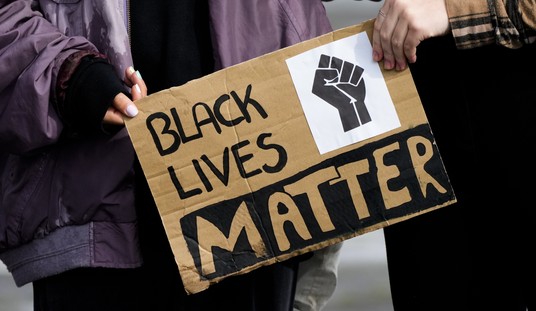The State of the Union Address (SOTUA) is now last week’s history. Nearly every aspect of it has been fully dissected. For example, the National Taxpayers Union (NTU) has done a line-by-line analysis of what they call the “most expensive and widest ranging State of the Union Address yet.” They found that the “quantifiable agenda items” in the President’s proposals “weighed in at $83.4 billion.” The NTU called the efforts to combat climate change the “most costly single agenda item”—citing a “version of the ‘cap-and-trade’ bill to which Obama referred in his speech was priced at $282.4 billion total, or $56.5 billion per year.” The SOTUA specifically calls for “a bipartisan, market-based solution to climate change, like the one John McCain and Joe Lieberman worked on together a few years ago.
I’ve listened to and watched the coverage. I’ve not heard anyone address this one line from the speech—maybe it’s been covered and I just missed it. If so, maybe you missed it, too.
“I'm also issuing a new goal for America: Let's cut in half the energy wasted by our homes and businesses over the next 20 years.”
On the surface, it sounds innocent enough. No one wants “waste”—especially not wasted energy. To fully understand the impact of the simple statement, you have to read the supporting document released coincidentally with the SOTUA: The President’s Plan for A Strong Middle Class & A Strong America. Within the plan, we find the following: “doubling American energy productivity by 2030, starting with a new Energy Efficiency Race to the Top for states: The President is laying out a bold but achievable goal to slash energy waste through increased efficiency.”
This whole energy efficiency idea came from the Energy 2030 report recently released by the Alliance Commission on National Energy Efficiency Policy. The idea is that “energy productivity, or the amount of economic output possible at a given level of energy supply, increases as does efficiency, thereby allowing us to do more with less energy.” Kateri Callahan, president of the Alliance to Save Energy, which spearheaded Energy 2030, said the following in response to Obama’s inclusion of their ideas: “We very much welcome that the administration embraced some of the recommendations.”
Recommended
Addressing the line in question, energy writer Elisa Wood said: “It will take some serious work to achieve the goal. We must upgrade energy infrastructure, adopt advanced technologies, educate and motivate consumers, and institute a favorable regulatory climate, the commission said. These steps will cost hundreds of billions of dollars, but the potential exists to capture a trillion dollars in energy savings.”
Again, efficiency, on its own, is a laudable goal. The inclusion of this comment in the SOTUA—which most agree the “laundry list” of dreams will never happen—does represent Obama’s ideology of pushing less energy usage. This is troubling because it is widely accepted that energy consumption and economic growth go hand-in-hand. A successful country uses more energy. For example, one of the reasons the US is using less gasoline is that so many people are unemployed. They are not driving to and from work every day. They are not taking long driving vacations. They are hunkered down. Heavy manufacturing requires abundant, available, and affordable energy. Energy is one of manufacturing’s biggest expenses. But because of closed factories, we are actually using less electricity in the industrial sector than we did in 2000.
If the President truly wants to bring manufacturing back to America, as he claims, instead of pushing for less energy use, he should be working to make available as much low-cost energy as possible. But he is pushing for more “clean energy”—which is also many times more expensive, as Americans are beginning to see on their utility bills.
The problem with the whole “efficiency” argument can be found, in part, in Wood’s comment: it will “cost hundreds of billions of dollars.”
News flash! We are in the worst economic crisis of most of our lifetimes. We have a spending problem. We do not have an energy problem—especially not an electricity problem (and the Energy 2030 report focuses primarily on electricity). Within our borders, we have enough coal, natural gas, and uranium (to fuel nuclear power plants) to power a strong, growing American economy for 300 years. Instead of promoting our abundant fuels, our president is ideologically bound to promoting energy that is inefficient, ineffective and uneconomical—while threatening our best competitive advantage in the global marketplace: low-cost energy.
If what I am positing here is incorrect, the Keystone pipeline would be approved (I do not think it will be—but I hope I am wrong); the EPA would be directed to dial back on the threat of a fracking ban—allowing the states to manage their own regulations, as they currently do; liquefied natural gas export terminals would be approved; modern super criticalcoal-fueled power plants would be built and older plants, that are burning so much cleaner today than they were 40 years ago, would be allowed to live out their productive lives instead of being shut down prematurely; federal lands would be opened up for access to our oil and natural gas resources that can be extracted with precision; the endangered species act wouldn’t be used to block energy development, including copper mining; and so-called “investments” in expensive green energy—that line the pockets of the President’s friends—would be curtailed (after all, we do already know how to make electricity from the wind and the sun, if we ever really need it, and we can take the technology off the shelf and implement it); and the economy would be booming—à la North Dakota.
Sadly, America is heading the other direction—pushing for reduced energy usage. What would the United States look like in a reduced energy environment? At best, check out Europe. At worst, just ask the passengers of the cruise ship Triumph who had to sleep outdoors in a makeshift tent city because there wasn’t electricity for air conditioning, who ate raw food because there was no way to cook it, and who had to use plastic bags as toilets because there was no way to process the waste. A life without energy is no triumph—it is a tragedy.
























Join the conversation as a VIP Member